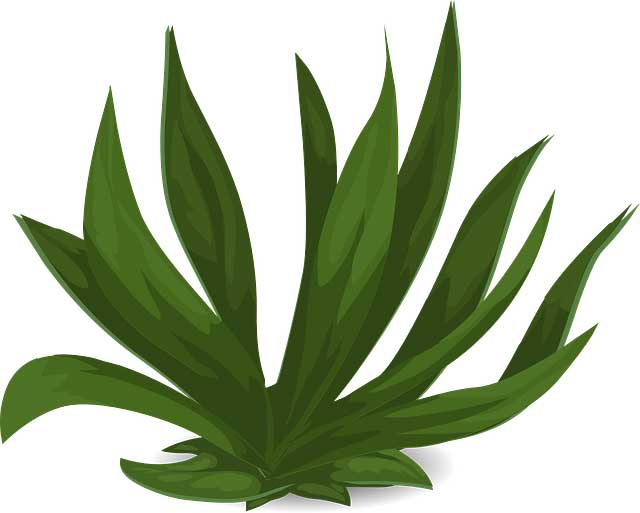 Nature has a wide range of plant species and they are classified into flowering plants and non-flowering plants. Flowering plants are famous for their beautiful flowers, but non-flowering plants are different in many aspects. Some examples of non-flowering plants are mosses, junipers, cedars, and redwood.
Nature has a wide range of plant species and they are classified into flowering plants and non-flowering plants. Flowering plants are famous for their beautiful flowers, but non-flowering plants are different in many aspects. Some examples of non-flowering plants are mosses, junipers, cedars, and redwood.
What Are Non-Flowering Plants?
Plants that don’t produce flowers are simply called non-flowering plants. These plants are different in many aspects from flowering plants, but the main difference is in their reproduction. Flowering plants produce flowers for their reproduction. But, non-flowering plants can produce from seeds as well as from spores.
Types of Non-Flowering Plants
Non-flowering plants are divided into two main types according to their reproduction process. One type is called gymnosperm which reproduces itself from seeds. Whereas, the second type contains spore-producing plants.
Gymnosperms – Seed-Producing Non-Flowering Plants
Gymnosperms reproduce from seeds similar to flowering plants. However, these seeds are different and are not enclosed in an ovary or fruit. But, their seeds, also known as naked seeds, are open in the air without any covering.
One of the main groups of gymnosperms is called conifers. Conifers produce seeds when the pollen from a male cone reaches the female cones. Conifers stock their seeds in the cones. When the seeds reach the rich soil, they germinate and grow. Examples of conifers are pines, cypresses, and redwoods.
Spore-Producing Plants

This group of non-flowering plants doesn’t produce seeds from reproduction. Instead, they use the spores for their reproduction. The spore-producing plants can be divided into ferns and mosses.
What Are Spores?
Spores are very small organisms consisting of single or multiple cells, housed in a hard coating. Spores are very tiny and are produced in large quantities. They are easily dragged by the wind and moved to far distances. When spores reach the moist place, they germinate and start to grow. Examples of plants that produce spores are mosses, horsetails, and ferns.
Examples of Non-Flowering Plants
Ferns
 Ferns are non-flowering plants that reproduce from their spores and thrive in diverse ecosystems. They are also categorized as vascular plants because they distribute their nutrients throughout their parts by special tissues called xylem and phloem. Ferns have unique leaves, known as fronds, which are made of divided leaves.
Ferns are non-flowering plants that reproduce from their spores and thrive in diverse ecosystems. They are also categorized as vascular plants because they distribute their nutrients throughout their parts by special tissues called xylem and phloem. Ferns have unique leaves, known as fronds, which are made of divided leaves.
They are found worldwide in tropical rainforests, temperate woodlands, and arid regions. Ferns produce their spores in specialized spore casings. When these casings get dried, the spores are released into the air. Traditionally, ferns are cultivated to improve the soil and air quality. Some of the famous fern plants are maidenhair fern, royal fern, and bracken fern.
Mosses
 Mosses are small-sized primitive plants that have been thriving on the Earth since 400 million years ago. These are non-vascular plants because they don’t have sophisticated tissues (xylem and phloem) for transportation of nutrients. Instead, they have very simple tissues that are specialized in the transportation of water. Mosses reproduce from spores that emerge on their tips.
Mosses are small-sized primitive plants that have been thriving on the Earth since 400 million years ago. These are non-vascular plants because they don’t have sophisticated tissues (xylem and phloem) for transportation of nutrients. Instead, they have very simple tissues that are specialized in the transportation of water. Mosses reproduce from spores that emerge on their tips.
There are around 12,000 known species of mosses that grow in dense clumps. Mosses are soft and tiny plants that can grow up to a few inches tall. Traditionally, people have been using mosses as an insulating material. They are also good absorbents of water and can absorb water more than 20 times their weight.
Horsetail
 Horsetail plants are the only surviving genus of the Equisetaceae family – others have become extinct in the past. They got their name inspired by the shape of the horse’s tail. These non-flowering plants reproduce from spores and can grow to a height of 26 feet. These plants are sometimes called puzzlegrass and snake grass.
Horsetail plants are the only surviving genus of the Equisetaceae family – others have become extinct in the past. They got their name inspired by the shape of the horse’s tail. These non-flowering plants reproduce from spores and can grow to a height of 26 feet. These plants are sometimes called puzzlegrass and snake grass.
Interesting Facts
- Redwoods are the largest non-flowering plants. Also, the largest among other plants.
- Spores of some plants are lightweight. They are dispersed by air easily.
- Pines are the non-flowering and evergreen plants. They remain green in all seasons.







